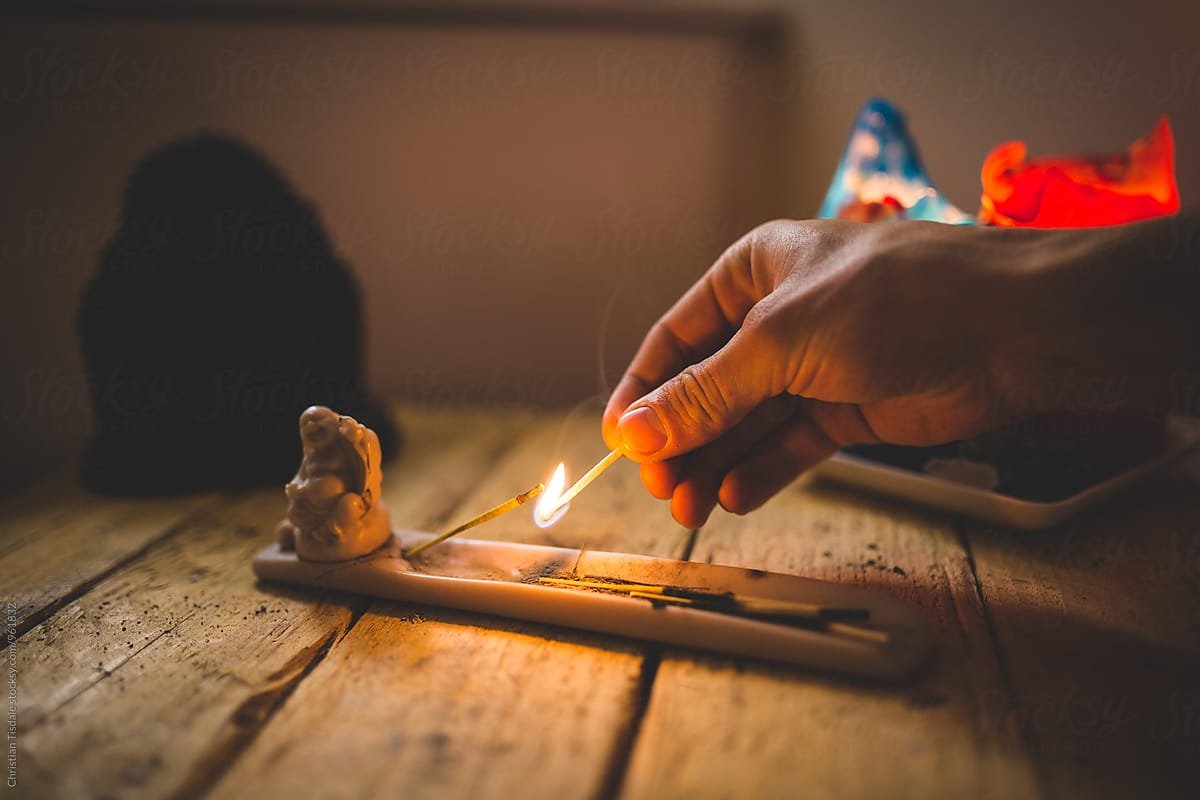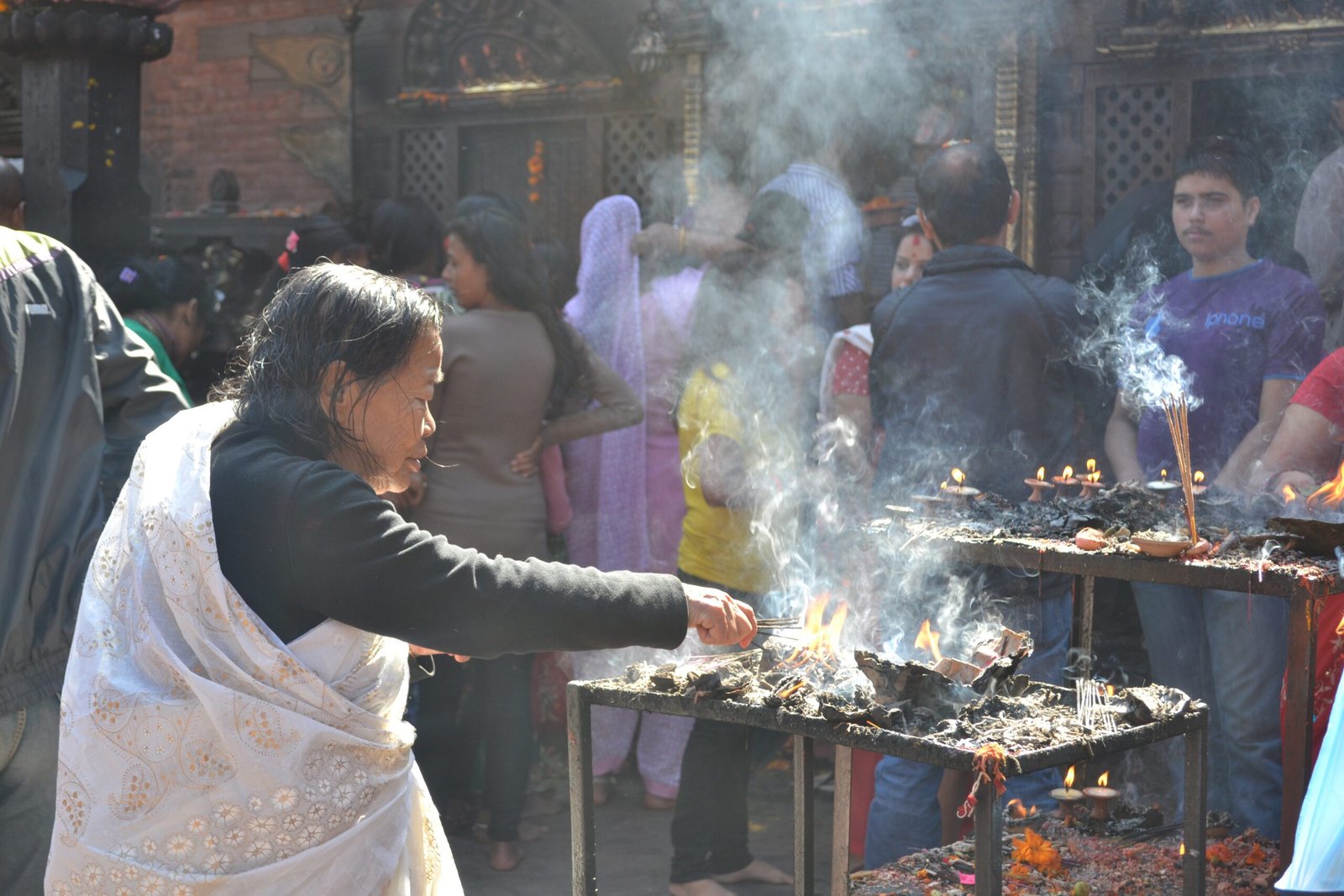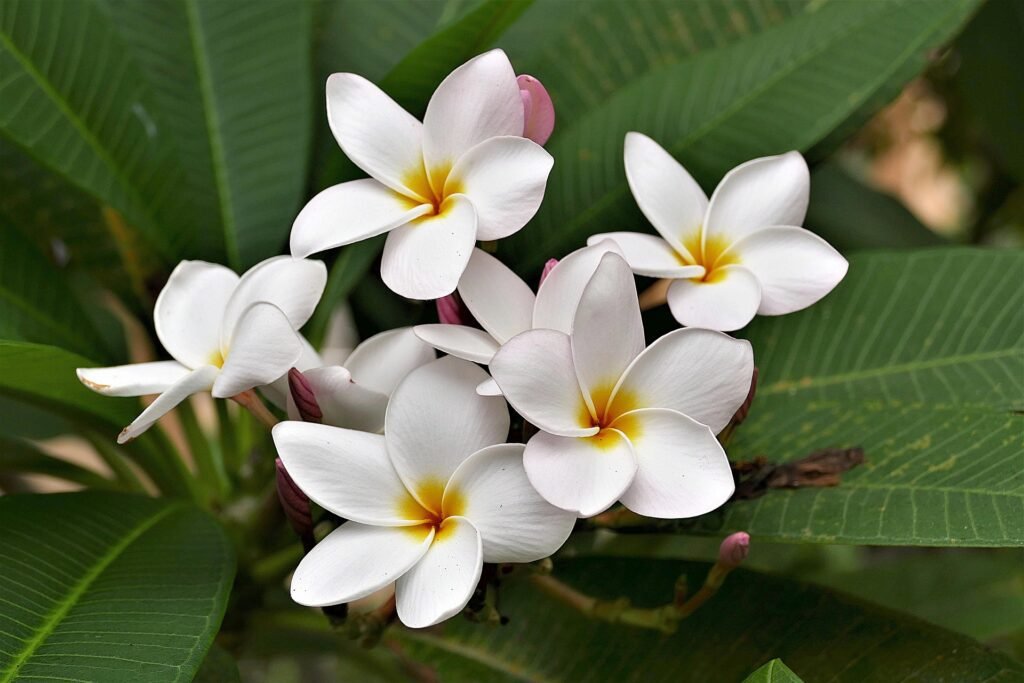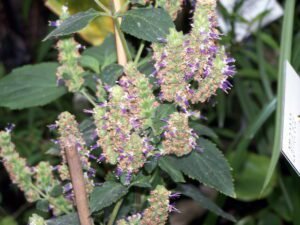The Scope of Our Exploration
This comprehensive guide reveals everything you need to know about Nag Champa incense, including its rich history, cultural significance, unique aroma profile, and holistic benefits. Whether you’re a seasoned enthusiast or new to the world of incense, this article will serve as your go-to resource for understanding why Nag Champa captivates hearts and souls worldwide.

Table of Contents
What is Nag Champa Incense?
The aura of Nag Champa is not just a scent; it’s an experience, a journey into the mystical lands where spirituality and sensuality harmonize. But before diving into this complex universe, it’s imperative to break down what makes up this iconic fragrance. Understanding its core components, cultural relevance, and sustainability implications can help you fully appreciate this legendary incense.
Champa Flower
Central to Nag Champa’s irresistible mystique is the Champa flower, or Plumeria, a flora with an intoxicating aroma that anchors this iconic blend. Indigenous to the Indian subcontinent, this flower exudes a fragrance that seizes your senses upon encounter. Neither nauseatingly saccharine nor abrasively strong, the Champa flower emanates a flawlessly harmonized aroma—richly floral yet grounded by an earthy base. Its olfactory character can aptly be termed celestial, punctuated by nuances that skirt the realm of the mystical.
Sandalwood
The soul of Nag Champa, however, is the irreplaceable sandalwood. This sacred wood has been revered in various spiritual practices for its ability to ground the mind and enhance meditation. Sandalwood acts as the balancing force against the potent fragrance of the Champa flower, adding a smooth, woody richness that serves as an anchor for the overall scent. Its calming aroma adds a layer of depth to Nag Champa, allowing it to maintain a multi-faceted aroma profile.
Additional Elements
The Champa flower and sandalwood take center stage, but various spices, resins, and gums truly complete this masterpiece. Ingredients like vanilla, black pepper, and cinnamon often make cameo appearances, each adding their unique notes to the final blend. Depending on the specific formula, you might detect hints of juniper, myrrh, or even dragon’s blood resin. These additional elements offer spicy and earthy nuances that enrich the complexity of Nag Champa.

The Benefits of Using Nag Champa Incense
Nag Champa is far more than an iconic scent; it is a vessel of well-being, both spiritual and psychological. People have long celebrated the fragrance for its captivating aroma, but it’s important to highlight the range of benefits that Nag Champa incense offers. From elevating spiritual rituals to contributing to mental health, the benefits of using Nag Champa incense go beyond mere olfactory pleasure.
Spiritual Benefits
Enhances Meditation and Prayer
One of the foremost benefits of Nag Champa incense in the spiritual realm is its unparalleled capacity to create an atmosphere conducive to meditation and prayer. The intricate blend of sandalwood, Champa flower, and various resins not only purifies the space but also focuses the mind. For practitioners of meditation or yoga, this can aid in achieving deeper states of focus and tranquility.
Energy Cleansing
In various spiritual traditions, incense is used for cleansing the energy of a space. Nag Champa, with its potent blend of natural ingredients, is particularly effective in this regard. Whether it’s clearing out old, stagnant energy or preparing a room for a spiritual ritual, the purifying qualities of Nag Champa make it an essential tool in any spiritual practice.
Psychological Benefits
Stress Reduction
One of the most compelling reasons to use Nag Champa in a contemporary setting lies in its proven effectiveness in reducing stress and anxiety. The scent activates certain neurotransmitters in the brain that are responsible for inducing feelings of relaxation and well-being. In a world that is increasingly characterized by stress and hectic lifestyles, this is not a benefit to be underestimated.
Enhances Creativity
Artists and creative professionals around the world often use Nag Champa during their creative processes, and it’s not a coincidence. The scent has the unique ability to facilitate a state of creative flow, allowing for heightened focus and a broader scope of imaginative thinking. The next time you’re seeking creative inspiration, consider lighting a stick of Nag Champa to stimulate your mind.
“The first time I lit a stick of Nag Champa, I was captivated by its complex aroma. The blend of floral and woody notes is unlike anything I’ve ever experienced. It’s my go-to scent for relaxation now.”
— Mark, Aromatherapy Enthusiast
Physical Benefits
Air Purification
While it’s common knowledge that Nag Champa purifies the energy of a space, what’s less known is that it also has air-purifying qualities. The natural ingredients like sandalwood and certain resins have antimicrobial properties. When burned, they emit particles that purify the air, making the environment cleaner and more conducive to health and well-being.
Aids in Sleep
The calming properties of Nag Champa are not just beneficial for stress relief and meditation; they can also help in achieving a more restful sleep. Lighting the incense before bedtime creates a serene atmosphere, making it easier to fall asleep and achieve a state of deep restfulness. However, it’s essential to ensure proper ventilation and safety while using incense in a sleeping environment.

Cultural Significance
In Spiritual Practices
Nag Champa isn’t merely an aromatic indulgence; it’s an integral part of spiritual rituals and practices, particularly in the Indian subcontinent. It’s a common accompaniment in Hindu temples, ashrams, and even households during prayers and meditations. People believe that incense purifies the surroundings and prepares the mind for deep spiritual communion. In Buddhism, practitioners use it to enhance focus during meditation sessions, providing a harmonious blend of sensory engagement and spiritual upliftment.
In Contemporary Settings
While rooted in tradition, Nag Champa has also found its way into modern culture. It’s not uncommon to encounter its tantalizing aroma in Western yoga studios, wellness retreats, and even chic urban boutiques. The scent has transcended its spiritual roots to become an olfactory icon that is synonymous with relaxation and well-being, making it a global phenomenon embraced by people from all walks of life.
Sustainability Concerns
Resource Management
One of the growing concerns around the production of Nag Champa is the sustainability of its core components, particularly sandalwood. Sandalwood trees are slow-growing and require several years to produce quality heartwood. Over-harvesting has led to significant ecological impact, making it vital to source this ingredient sustainably.
Ethical Considerations
Beyond environmental factors, ethical considerations around the production of Nag Champa are increasingly gaining attention. Factors such as fair trade and responsible sourcing play a pivotal role in the overall integrity of the incense. Some brands now focus on ethical harvesting practices and support local communities to ensure that they do not compromise the spirituality Nag Champa embodies at any stage.
“I appreciate that some brands are focusing on sustainable sourcing for Nag Champa ingredients. It makes me feel good to know that my purchase is ethically responsible.”
— Emily, Environmental Activist

Historical Perspective
Nag Champa’s transcendent aroma isn’t a recent marvel; it is an epitome of an age-old legacy that traces its origins back to the Indian subcontinent. Understanding its history offers not just a lens to view its significance but also provides a context that enriches the fragrance’s experiential aspect. This is more than mere nostalgia—it is a scent that is steeped in spiritual and cultural heritage, becoming a global phenomenon over time.
Indian Origins
Spiritual Underpinnings
For centuries, the scent of Nag Champa has deeply ingrained itself in India’s spiritual fabric. People originally used this incense mainly in temples to create a serene atmosphere for worship and meditation. Ancient scriptures often mention the scent, associating it with deities and rituals. The scent is not just an accessory; it is an essential element that elevates spiritual practices.
Ritualistic Uses
Beyond the temples, Nag Champa has found its place in various Indian ceremonies, from weddings to funerals. It is believed to purify the aura of a space, creating an environment suitable for sacred activities. Whether it is during the intricate rituals of a Hindu wedding or the solemn reverence of last rites, the scent serves to sanctify and uplift the proceedings, infusing them with a mystical aura that is both comforting and spiritually engaging.
Western Fascination
The 1960s and Beyond
The spiritual explorations of the 1960s first brought Nag Champa to the Western world. Icons like The Beatles, who ventured into Indian spirituality, helped introduce the scent to the West’s olfactory landscape. People frequently used it in hippie communes and spiritual retreats, and it became a staple in the growing New Age movement. The scent symbolized alternative spirituality and cultural openness, resonating with a generation that sought more than materialism.
Today’s Popularity
Today, Nag Champa enjoys universal love and recognition. It is no longer confined to spiritual or alternative spaces; it has become a mainstream marvel. You’ll find it in luxurious spas, modern homes, and even in car air fresheners. The scent has not lost its spiritual essence but has added multiple layers of contemporary meaning, making it a versatile fragrance that transcends borders and cultural contexts.
Read “A Journey Through the History of Incense” to find out more about the influence of incense over the ages of time.
Global Influence
Creative Communities
The allure of Nag Champa extends beyond just spiritual or wellness communities; artists, musicians, and creative minds worldwide favor it. The scent has a reputation for inducing a state of creative flow, making it popular in studios and artistic settings. Musicians like Bob Dylan and art studios worldwide have confessed to the inspirational qualities of Nag Champa, making it a scent of creativity and ingenuity.
Wellness Practices
Nag Champa’s impact extends to wellness practices like yoga and mindfulness. In yoga studios across the world, the incense is often used to establish a peaceful and focused atmosphere, which is essential for the mind-body connection. The fragrance complements the goals of modern wellness routines, lending a sensory richness that enhances the experience, whether it’s a session of intense Vinyasa or a guided meditation journey.

The Aromatic Profile of Nag Champa
The aroma of Nag Champa is not merely a scent; it’s a complex composition that engages the senses in a symphony of olfactory bliss. To say that it’s captivating would be an understatement. However, in order to truly appreciate the fragrance, it’s crucial to dissect its aromatic profile. From its initial top notes to its lingering base, every element plays a significant role in creating the iconic fragrance that has enthralled millions across the globe.
Top Notes
Floral and Spicy Overtones
As soon as the incense is lit, the first wave of aroma that you encounter comprises floral and spicy overtones. The Champa flower usually steals the spotlight with its intoxicatingly fresh and rich aroma. But don’t be surprised if you also detect a subtle hint of spices like cinnamon and black pepper. These top notes serve as the gateway, drawing you into the unique aromatic experience that is Nag Champa.
Citrusy Undertones
Often overlooked but incredibly significant in the aromatic equation are the citrusy undertones that occasionally surface. Ingredients like bergamot or citrus peel are sometimes added to the mix to introduce a fresh zestiness. This serves to lift the heaviness that can come from the dominant floral and spicy top notes, providing a balanced and inviting introduction.
Middle Notes
Resinous Heart
As the incense continues to burn, you’ll begin to notice the resinous heart of the scent emerging. Elements like frankincense, myrrh, or benzoin are often present, lending depth and complexity to the aroma. People have used these resins in various spiritual and religious rituals for thousands of years, and their inclusion in Nag Champa elevates the fragrance to a sacred level.
Woody Elements
Then comes the soul of the scent—the woody elements. Sandalwood often takes the center stage here, giving the aroma its characteristic earthy depth. It acts as a balance to the floral and spicy top notes, grounding the scent and giving it longevity. Occasionally, other woods like cedar or patchouli may be blended to offer additional layers of complexity.
Base Notes
Musky and Earthy
As the fragrance settles, what remains is a musky, earthy aroma that lingers long after the incense has stopped burning. This is often due to elements like patchouli, amber, or even animalic notes that some traditional formulas may include. These base notes serve as the lasting memory of the Nag Champa experience, a gentle reminder of the journey you’ve just undertaken.
Vanilla Sweetness
Some formulations of Nag Champa incorporate vanilla as a base note, lending a sweet, comforting finish to the scent profile. This soft, creamy undertone serves to round off the aromatic experience, leaving you with a sense of complete olfactory satisfaction.

Conclusion
The world of Nag Champa incense is a tapestry rich in history, aromatic intricacy, and a multitude of benefits that extend from the spiritual to the psychological and even the physical. To view Nag Champa merely as an incense would be akin to calling a symphony just a sequence of notes; it is a holistic experience that engages all the senses and transcends its immediate function as a fragrance.
The beauty of Nag Champa lies not just in its enchanting aroma but also in the ancient wisdom and craftsmanship that go into its creation. From the handpicked Champa flowers to the artisanal blending and hand-rolling processes, each stick or cone is a testament to a tradition that has been perfected over generations.
Understanding the elaborate aromatic profile — a rich tapestry of top, middle, and base notes — allows you to fully immerse yourself in the unique experience that Nag Champa offers. And once you delve into its benefits, you find that this incense is not just a scent but a tool for enhancing meditation, reducing stress, sparking creativity, and even purifying the air.
Nag Champa is more than just a fragrant indulgence; it’s a pathway to enhanced well-being, a deeper spiritual practice, and a more harmonious living environment. Whether you are a spiritual seeker, a connoisseur of fine fragrances, or someone seeking a slice of serenity in a chaotic world, Nag Champa has something invaluable to offer.
Frequently Asked Questions (FAQ)
What is the main ingredient in Nag Champa?
The main ingredient is typically the Champa flower, often blended with other elements like sandalwood, spices, and resins to create the unique Nag Champa scent.
How is Nag Champa incense made?
Nag Champa incense is often hand-rolled by skilled artisans using a blend of natural ingredients. This process includes the careful blending of various elements and often an ageing process to enrich the fragrance.
Is Nag Champa good for meditation?
Yes, one of the primary uses of Nag Champa is to create an atmosphere conducive to meditation, prayer, and other spiritual practices.
Can Nag Champa help in reducing stress?
Absolutely. The aromatic compounds in Nag Champa are known to activate neurotransmitters that induce feelings of relaxation and well-being.
Is it safe to use Nag Champa incense indoors?
While Nag Champa is made from natural ingredients, it’s always advisable to use it in a well-ventilated space and to keep it out of reach of children and pets.
Sources
- Nag Champa Incense: 5 Benefits And Meaning of This Famous Fragrance – Natural Scents
- Effects of Aromatherapy on the Physical and Mental Health and Pressure of the Middle-Aged and Elderly in the Community – MDPI
- The Effects of Aromatherapy on Anxiety and Depression in People With Cancer: A Systematic Review and Meta-Analysis – NCBI





